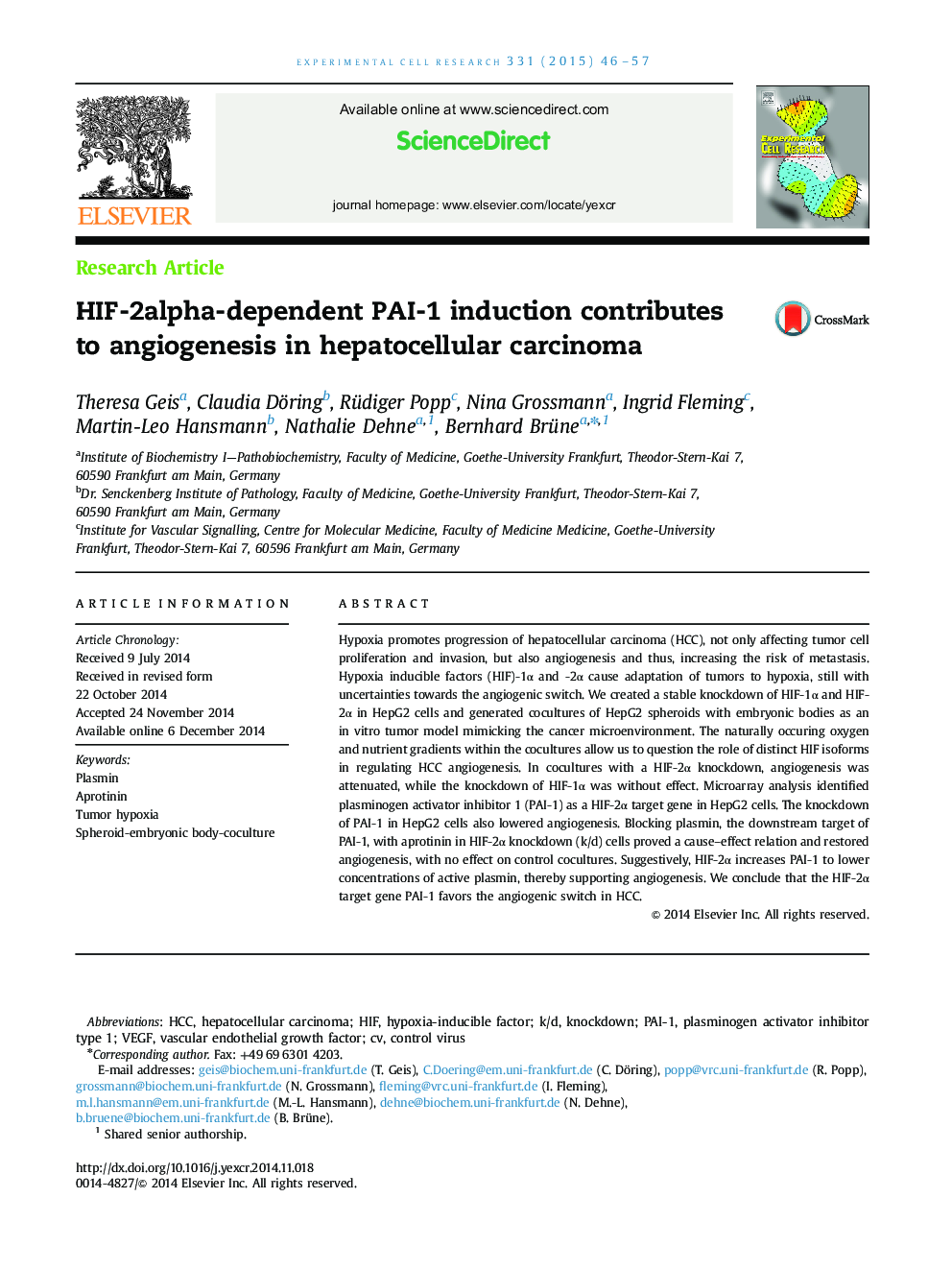| Article ID | Journal | Published Year | Pages | File Type |
|---|---|---|---|---|
| 10903930 | Experimental Cell Research | 2015 | 12 Pages |
Abstract
Hypoxia promotes progression of hepatocellular carcinoma (HCC), not only affecting tumor cell proliferation and invasion, but also angiogenesis and thus, increasing the risk of metastasis. Hypoxia inducible factors (HIF)-1α and -2α cause adaptation of tumors to hypoxia, still with uncertainties towards the angiogenic switch. We created a stable knockdown of HIF-1α and HIF-2α in HepG2 cells and generated cocultures of HepG2 spheroids with embryonic bodies as an in vitro tumor model mimicking the cancer microenvironment. The naturally occuring oxygen and nutrient gradients within the cocultures allow us to question the role of distinct HIF isoforms in regulating HCC angiogenesis. In cocultures with a HIF-2α knockdown, angiogenesis was attenuated, while the knockdown of HIF-1α was without effect. Microarray analysis identified plasminogen activator inhibitor 1 (PAI-1) as a HIF-2α target gene in HepG2 cells. The knockdown of PAI-1 in HepG2 cells also lowered angiogenesis. Blocking plasmin, the downstream target of PAI-1, with aprotinin in HIF-2α knockdown (k/d) cells proved a cause-effect relation and restored angiogenesis, with no effect on control cocultures. Suggestively, HIF-2α increases PAI-1 to lower concentrations of active plasmin, thereby supporting angiogenesis. We conclude that the HIF-2α target gene PAI-1 favors the angiogenic switch in HCC.
Keywords
Related Topics
Life Sciences
Biochemistry, Genetics and Molecular Biology
Cancer Research
Authors
Theresa Geis, Claudia Döring, Rüdiger Popp, Nina Grossmann, Ingrid Fleming, Martin-Leo Hansmann, Nathalie Dehne, Bernhard Brüne,
